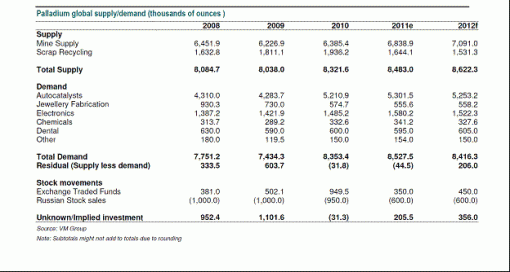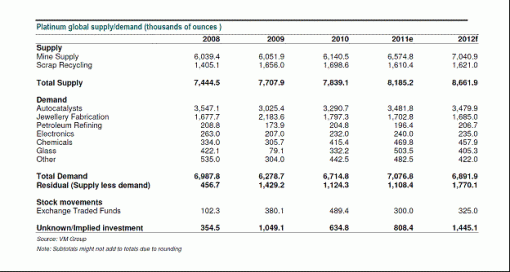 New York bullion trading fired off a few more rounds of price-additive flares this morning as participants attempted to build on yesterday’s gains with equal fervor. Today’s list of buying excuses included European equity losses in the region’s financial sector, and yesterday’s poor reading in the Philly area’s factory index. Mirroring at least part of the gains in gold, the Swiss franc also continued to defy gravity for a third trading day and the country’s central bank was seen once again trying to hold back the inflow of frightened money before it does significant damage to its export-based economy.
New York bullion trading fired off a few more rounds of price-additive flares this morning as participants attempted to build on yesterday’s gains with equal fervor. Today’s list of buying excuses included European equity losses in the region’s financial sector, and yesterday’s poor reading in the Philly area’s factory index. Mirroring at least part of the gains in gold, the Swiss franc also continued to defy gravity for a third trading day and the country’s central bank was seen once again trying to hold back the inflow of frightened money before it does significant damage to its export-based economy.
Spot gold opened with a gain of $27.60 (about $27 lower than the overnight high, but no one appears to be counting… ) and spot silver started off with a $1.12 per ounce rise to $41.76 while platinum trading opened with a $25 climb to $1,863.00 per ounce. Gold is once again running at or near parity and dueling with the noble metal in an occurrence almost as rare as Haley’s comet visit to the solar system.
Palladium was the lone decliner this morning, shedding $2 to start Friday’s session at $750.00 the ounce.
In the background, the US dollar fell 0.48 on the trade-weighted index and it traded at 73.90 while crude oil lost less than half-a-percent but still threatened to break the $82 mark and perhaps aim towards the round figure below. Speculators have been pounding black gold hard for the past four weeks even as a majority of economists opine that the US will be able to avoid another recession and that the very fact that oil has become much less costly might be the catalyst that could trigger higher levels of growth in the country. There was a time when exponential gains lifted the commodity to $147 and prompted calls for more moonshots to come.
Exponential gains continued to remain the order of business in overnight gold trading in the overseas markets. At one point more than 3% was added to Thursday’s closing value in New York and the current 60-day tally is fast-approaching 330 dollars’ worth of speculation-based gains. Last week’s attempt at a "correction" looks now, some $130 behind, like just so much of a shoelace-tying pause for a marathoner who ingested six vials of 5-Hour Energy and is still running up California Street’s steep hill.
Only this, right here, right now, is no San Franciscan hill; this runner might as well be urban climber Alain Robert, or Spiderman, scaling the golden-glass-laden façade of Trump Tower. It all comes down to whether the suction cups will hold before the top is reached — whatever floor number that might currently be thought to be found. One slip, one misstep, one downward glance, and the climber’s subsequent "experience" might be equally worth covering in the headlines of the financial markets of that day.
Not even one of the possible interpretations of the repatriation of Venezuela’s gold appeared to make a difference to this parabolic party. Analysts at Capital Economics suggested that the calling in of that country’s gold chips by ailing strongman Hugo Chavez is basically a precursor to the bullion to soon be sold as Venezuela is plum out of greenbacks. In that sense, and after suggesting that if there is no vault space to house the bars he would put them in the basement of his Presidential Palace, Mr. C came one step closer to the ultimate Marxist utterance on gold; that of using it to line certain bathroom fixtures…
At this juncture, one might (if they have not already done so) consider certain strategies via which their exposure to precious metals may be hedged. Sure, anyone who bought gold at, say, $900 might just let go of half of it and remain the owner of an equal-sized stash of "cost-free" bullion, but that’s another matter altogether. We are talking about low-cost insurance, such as Seeking Alpha’s contributor David Pinsen suggests herein.
This, as given recent "developments" traders such as Zach Karabell (seen on CNBC’s "Fast Money") warn that they do not like trades that are "a confluence of vast amounts of irrational emotions and panic about an uncertain future."
Yesterday’s reading of the inflation tea leaves in the US revealed that prices are rising at a fast enough clip to perhaps delay any further "offerings" by the Fed. At the very least, the gain in CPI — coming in at a figure twice as high as economists had anticipated-will augment the internecine warfare among the Fed’s policymakers as to which way to proceed. Recall that the latest meeting of the FOMC was dissent-laden on in nearly two decades. One of the items to debate is whether the US economy is indeed skirting a collapse or not. New York Fed President Dudley reaffirmed yesterday that the risk of falling from the current, apparently stagnant paradigm that the US economy finds itself in, to a full-blown contraction, is "quite low."
Finally today, let’s get back to an area where the next and most realistically attainable incremental gains might yet come from; the noble metals’ niche. The latest "White Book" report by ABN/AMRO and the good folks at the VM Group therein, suggest that "platinum and palladium have a bright future." Certainly, when markets are viewed from the perspective of fundamentals as opposed to momentum/fear/greed/panic-based parabolas, the PGM sector offers quite a contrast to gold and to silver. The latter pair’s members are both in surplus (1,700 and 7,000 tonnes respectively) and have been trading on pure emotion-based adrenaline.
The facts offered by the ABN/AMRO group of analysts speak volumes about the structure of the PGM market. To begin with, as regards platinum, 45% of its global offtake is accounted for by the automotive industry. In the case of palladium, the figure is even higher, at 60% of total consumption. Are there risks to the demand-side in this niche? Why, sure, but the likelihood of not achieving a 4 to 5 percent annualized growth in the auto sector remains fairly remote even at this juncture; at that level of expansion is all that is needed to put pressure on supplies. Now, consider the five-year tally in auto sales growth rates in the BRICS countries: Brazil +11%, Russia +17%, China 29%. ‘Nuff said.
On the supply side, VM Group’s team notes that "South Africa produces about 80% of global PGM supply. As a result, political risk in South Africa is highly correlated with PGM supply risk. The political, macroeconomic and policy environments in South Africa have a particular resonance to the PGM market; more so than for any other country or any other metal — apart from perhaps China and the rare earth elements. Right now, the omens are not good."
This brings us to the "nuts & bolts" statistics as presently tallied by the ABN/AMRO team. The tables below just about cover it all. Without further ado (except to once again call your attention to the tightness in the palladium market):
Jon Nadler
Senior Analyst
Kitco Metals Inc.
North America
Disclaimer: The views expressed in this article are those of the author and may not reflect those of Kitco Metals Inc. The author has made every effort to ensure accuracy of information provided; however, neither Kitco Metals Inc. nor the author can guarantee such accuracy. This article is strictly for informational purposes only. It is not a solicitation to make any exchange in precious metal products, commodities, securities or other financial instruments. Kitco Metals Inc. and the author of this article do not accept culpability for losses and/ or damages arising from the use of this publication.
www.kitco.com and www.kitco.cn
Blog: http://www.kitco.com/ind/index.html#nadler












